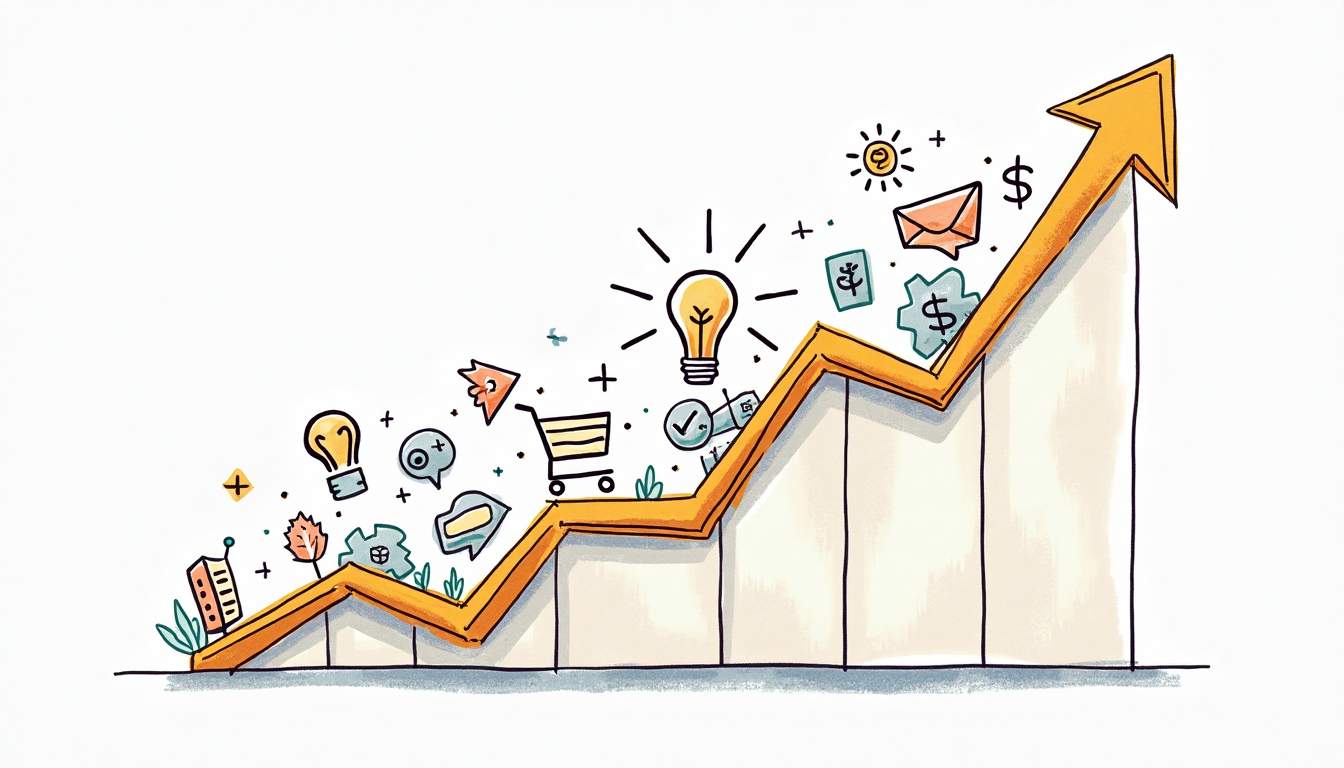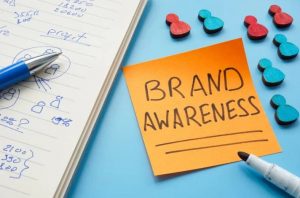more insight into our work
our company news
We only do one thing, but we do it very well. Here is where
we'll share quick updates from our
company
and special
umbrella work.

How Does Brand Awareness Boost Sales? Key Insights
Why do some brands seem to sell effortlessly while others struggle for every transaction? The answer often lies in brand awareness. When consumers recognize, trust, and feel connected to a brand, the path from discovery to purchase shortens dramatically. In highly competitive markets, awareness is more than name recognition—it is the engine that powers long-term revenue growth, customer loyalty, and higher profit margins.
The following article unpacks how brand awareness influences sales, examines the psychological triggers behind purchase decisions, and offers practical strategies to build a visible, memorable, and conversion-focused brand presence. Each section draws on up-to-date research, real-world examples, and proven tactics so marketers, founders, and business leaders can turn awareness into measurable revenue gains.
Understanding the Brand Awareness-Sales Connection
Brand awareness refers to the extent to which consumers can recall or recognize a brand under different conditions. While that definition sounds academic, its commercial implications are concrete. According to a recent survey, 81% of shoppers say they must trust a brand before purchasing. Trust, in turn, begins with awareness: shoppers cannot trust what they do not know.

A recognizable brand lowers the perceived risk of buying. When consumers see a familiar logo on a crowded shelf or scroll past a known name in a digital marketplace, probability of selection rises. Familiarity signals reliability, reduces cognitive load, and reinforces the belief that “others have chosen this before,” a classical social-proof cue. As a result, marketing campaigns that strengthen familiarity often achieve a multiplier effect on sales without proportionally increasing advertising budgets.
In addition, brand awareness fuels word-of-mouth referrals. People rarely recommend unknown products to friends or colleagues, but they enthusiastically share brands they trust. Every recommendation amplifies awareness in new circles, creating a virtuous cycle that blends organic growth with rising sales. This phenomenon is particularly evident in the age of social media, where a single post or tweet can reach thousands, if not millions, of potential customers. Brands that foster a community around their products often see this organic sharing translate into increased sales, as consumers feel a sense of belonging and loyalty to the brand.
The Psychology Behind Brand Recognition and Purchase Decisions
Human brains are wired for shortcuts. Psychological heuristics—mental rules of thumb—allow consumers to make quick decisions in busy retail aisles and information-dense online feeds. One of the strongest heuristics is familiarity. Products from brands that shoppers have seen repeatedly feel safer, leading to quicker “add to cart” moments. That familiarity is often built through consistent visual assets. In fact, research shows that brands employing a memorable color palette are up to 80% more recognizable than competitors that keep changing their look.
Emotion also shapes buying behavior. When a brand’s values align with a consumer’s own worldview, an emotional bond forms. A recent study found that 65% of buyers feel this kind of connection when they encounter value alignment, and emotionally connected customers can generate 306% higher lifetime value. Emotions turn static awareness into active preference—shoppers may even pay a premium to purchase from brands they feel good about. This emotional connection can be further enhanced through storytelling, where brands share their journey, mission, and the impact they aim to create. Such narratives resonate deeply with consumers, making them feel part of something larger than just a transaction.
Measuring the Impact of Brand Awareness on Revenue Growth
Marketers frequently ask, “Can awareness be tracked in dollars and cents?” The answer is yes, and the numbers are compelling. Consistent branding—defined as presenting the same voice, visuals, and promise across channels—can boost revenue by as much as 23%. Uniform assets drive recognition, recognition drives trust, and trust drives sales.
Leading teams track metrics such as aided and unaided recall, branded search volume, social share of voice, and direct traffic. A steady uptick in these indicators often foreshadows revenue lifts weeks or months later. By correlating top-of-funnel awareness indicators with bottom-line sales data, businesses can build a predictive model that links each branding dollar to future income. Moreover, advanced analytics tools allow brands to segment their audience and tailor their messaging, ensuring that the right message reaches the right consumer at the right time. This level of precision not only enhances brand awareness but also optimizes the overall marketing spend, making every dollar work harder for the brand's growth.
Effective Strategies to Build Brand Awareness
While catchy slogans and vibrant logos are important, modern awareness tactics extend far beyond traditional advertising. They integrate data, storytelling, community engagement, and clear values to cut through noise. The most successful brands follow a multi-channel approach: they show up consistently wherever their target audience spends time, from TikTok to brick-and-mortar pop-ups.

Equally crucial is defining a unique brand promise. A clear value proposition acts as a magnetic north for all marketing activities, ensuring that every social post, product launch, and customer service interaction reinforces the same core idea. Consistency nurtures recognition, while distinctiveness builds recall.
Finally, savvy marketers leverage both short-term and long-term tactics. Paid ads can quickly place a brand in front of millions; content marketing, public relations, and partnerships deepen familiarity over months and years. Blending both horizons is often the fastest route to sustainable growth.
Digital Marketing Approaches for Maximum Brand Visibility
Digital channels provide an unprecedented canvas for storytelling. Search engines capture intent, social platforms build community, and email nurtures ongoing relationships. One notable finding: 77% of consumers prefer buying from brands they follow on social media. That statistic underscores the importance of a lively, authentic presence on platforms like Instagram, LinkedIn, and emerging networks where niche audiences gather.
Content remains king, but the kingdom has expanded. Brands now mix short-form video, interactive polls, behind-the-scenes reels, and live streams to maintain attention. User-generated content (UGC) is especially powerful, converting up to 29% higher than pages without it according to industry analyses. Encouraging customers to share real photos, reviews, and unboxing clips multiplies reach and delivers social proof at scale.
Search engine optimization (SEO) also deserves a spotlight. When potential buyers type questions into Google, ranking first introduces the brand at a critical decision point. Over time, organic traffic lowers customer-acquisition costs and positions the company as an authority, reinforcing trust pre-purchase.
Creating Memorable Brand Experiences Across Customer Touchpoints
A logo may spark initial recognition, but experience cements memory. From shipping boxes to onboarding emails, every interaction either strengthens or erodes awareness. Consider packaging: a distinctive, share-worthy design encourages buyers to post on social media, turning a simple delivery into a miniature billboard.
Offline events also play a role. Pop-up shops, sponsored meetups, and community workshops give prospects a tangible taste of the brand. These sensory encounters—scent, sound, tactile elements—activate deeper memory pathways than digital interactions alone. When offline and online touchpoints tell the same story, recall intensifies and purchase hesitation fades.
Translating Brand Awareness into Sales Conversion
Awareness without conversion is merely vanity. A strategic bridge must link recognition to revenue. That bridge is built with clear calls to action, frictionless buying journeys, and personalized follow-ups. Brands that master this handoff often enjoy lower cost per acquisition and higher average order values.
Segmentation is essential. Not every aware consumer is ready to purchase immediately, so messaging should align with intent signals. Retargeting ads, tailored email sequences, and loyalty programs nudge warm audiences toward the checkout button. The goal is to maintain relevancy without overwhelming prospects.
Finally, post-purchase engagement matters. Reviews, referral incentives, and value-rich communications such as usage tips turn one-time buyers into repeat customers and vocal advocates. As advocates share experiences, they feed the top of the awareness funnel, completing the profitable loop.
From Recognition to Consideration: Guiding the Customer Journey
The customer journey is rarely linear, yet it typically passes through four mindsets: unaware, aware, considering, and buying. Marketers who map content to each stage can gently shepherd prospects forward. Educational blog posts answer early questions, comparison guides address mid-funnel doubts, and limited-time offers trigger decisive action when readiness peaks.
Personalization technologies elevate this journey. Dynamic website sections show different headlines based on referral source, while AI-driven product recommendations reflect browsing history. Such contextual relevance acknowledges the customer’s individual path, making the next step feel natural rather than forced.
Case Studies: Brands That Successfully Converted Awareness to Sales
Consider the rapid ascent of a direct-to-consumer athletic apparel company that entered a crowded market with minimal advertising spend. By featuring real customers in Instagram stories, the brand generated a torrent of UGC. Engagement soared, and within one year, the company reported a 40% jump in revenue—all traced back to audiences first exposed via social shares. The strategy worked because it combined instant recognition (consistent visual identity) with relatable social proof (customer-led storytelling).
Another example is a sustainable household-goods startup that aligned its mission with environmental values. Leveraging cause marketing, it pledged to remove plastic waste for every product sold. With 89% of shoppers willing to switch to brands supporting a good cause and 73% willing to pay more for such products, the startup quickly cultivated loyalty and justified a premium price point. Awareness of the mission became inseparable from the decision to buy.
Finally, a legacy beverage company revitalized stagnant sales by investing in omnichannel consistency. It standardized packaging worldwide, synchronized its color palette across TV, mobile, and outdoor ads, and launched an app that gamified recycling. The unified campaign lifted global brand recall and, within two quarters, contributed to a double-digit increase in same-store sales.
